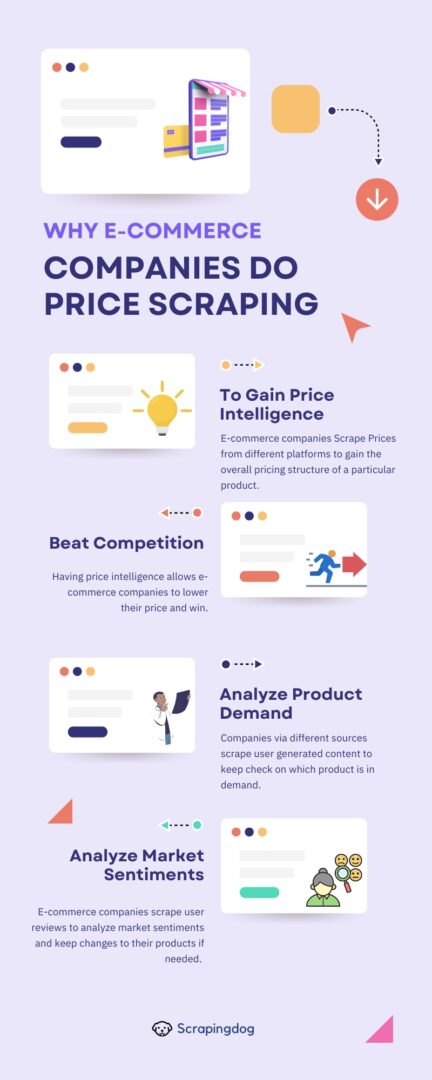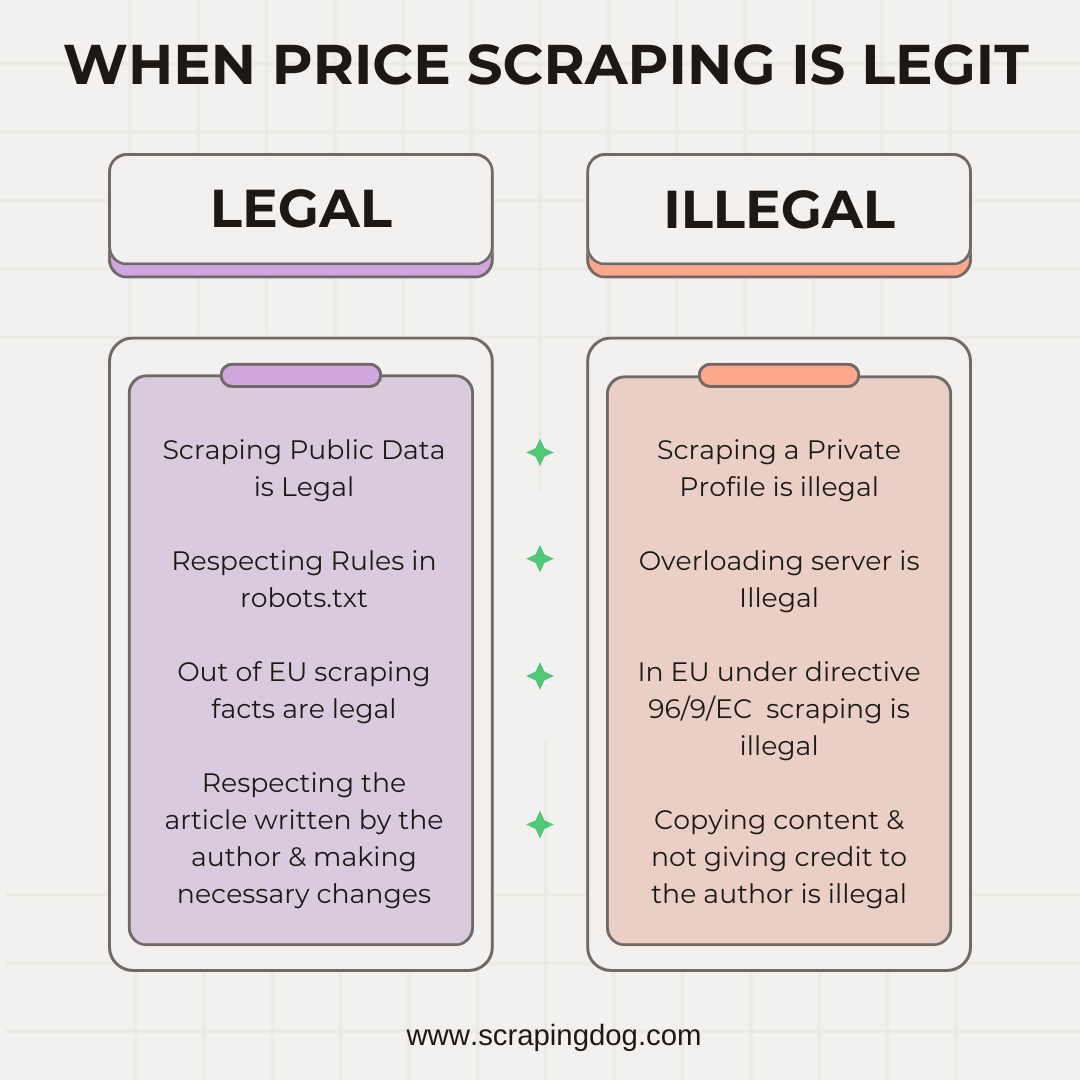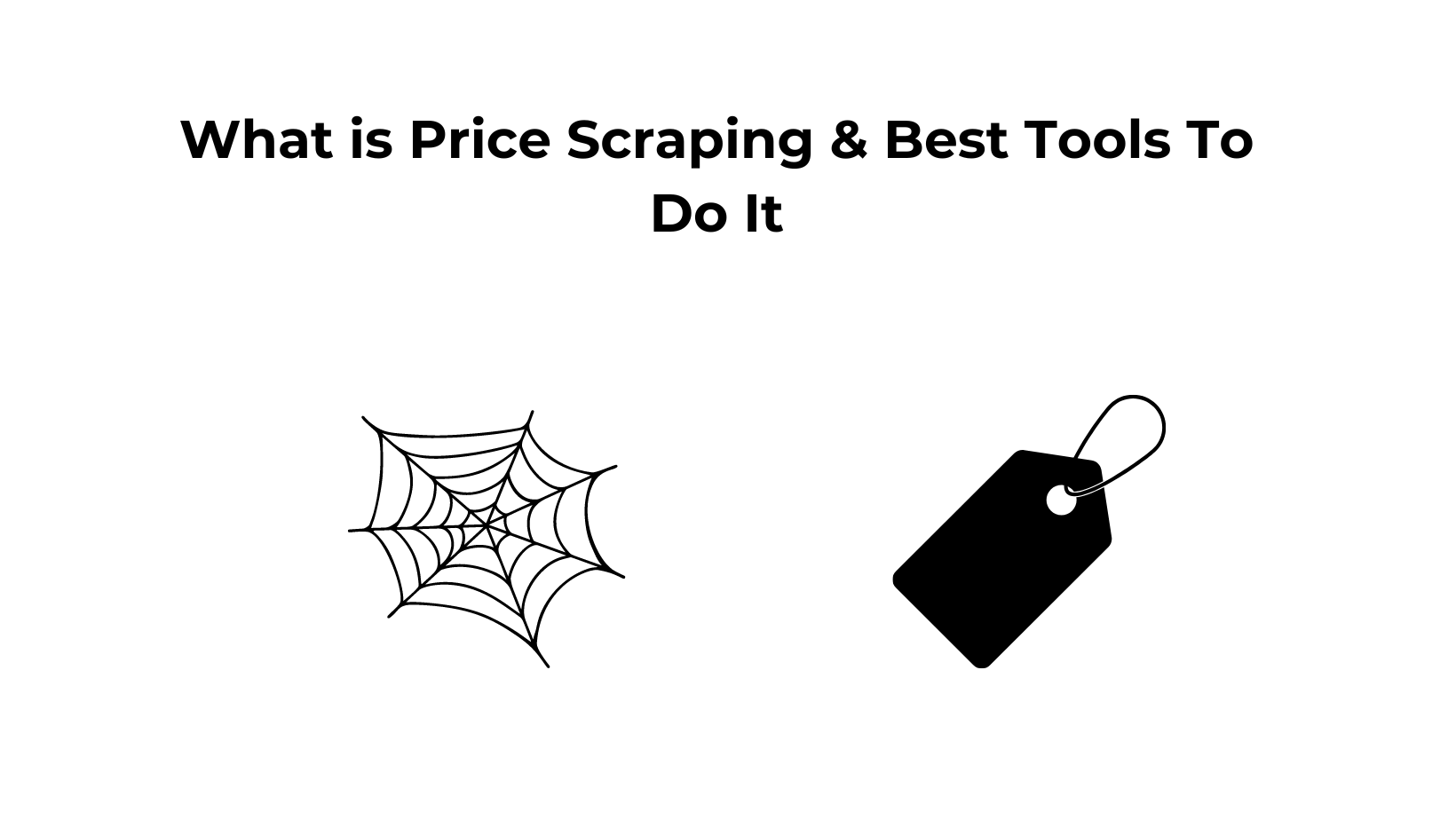In today’s highly competitive e-commerce landscape, staying ahead of the curve is crucial for businesses striving for success. One indispensable strategy involves the practice of price scraping.
This technique allows companies to extract and analyze pricing data from various online sources, enabling them to make informed decisions and optimize their pricing strategies.
In this article, we will delve into the fundamentals of price scraping, discuss its practical applications, and provide insights on how businesses can harness their full potential to gain a competitive edge in the ever-evolving digital commerce marketplace.
Let’s say you want to buy a laptop, you will search for it on Amazon, eBay, Walmart, etc. You will look for the cheapest price available for that laptop on these platforms and then buy it. This is what we do, right?
Now, you will think what is the role of web scraping when it comes to checking prices? Well, if you want to save some bucks then scraping prices from the different platforms can help you with analyzing the cheapest possible price and it will also tell which platform is selling it so that you don’t have to open every single website & monitor it.
It can be done in three simple steps:
- Scrape that target product URL.
- Parse the data.
- Email yourself with the name of the cheapest provider and the price.
You can even analyze the data for a week by scraping and storing it in a CSV file. Then you can decide based on dates on which prices are lower or dropped.
Why price scraping is done?
With the competition rising in online businesses, many suffer due to a lack of proper pricing strategy.
To gain an advantage in the market you need to do competitor price scraping. Monitoring 24*7 becomes mandatory when you want an edge over the others in your domain.
Know how: Web Scraping Can Help You in Your Market Research!!
Using web scraping tools you will be able to scrape any website in no time. Various eCommerce, Travel, Finance, etc companies collect a tremendous amount of data from the web because they know to beat their competitors they have to access their competitors’ data.
The advantage of using web scraping tools is to provide you with a seamless data pipeline that will be able to handle all the blocks between you and the data.
How do travel companies get benefits from price scraping?
Travel companies use hotel rate shopping tools to get the prices of their competitors. Let us understand how this process works.
Let’s take the example of The Lenox Hotel in Boston, USA, and consider the check-in date as 16 October 2023 and check-out as 17 October 2023. For booking this hotel there are many booking websites like Expedia, Hotels.com, HRS, Booking.com, etc.
Now, the guest will book it from the cheapest provider and that could be say Expedia. But because of big travel agencies, small agencies suffer due to a lack of bookings.
Read More: Web Scraping Booking.com using Python
To counter this, agencies use price comparison APIs to keep track of pricing offered by their competitors. In this competitive world, it becomes necessary to keep track of your niche market.
With pricing intelligence, you can set your prices and can even generate discounts to ultimately gain more bookings.
How do e-commerce companies get benefits from price scraping?
Many individual eCommerce platforms deal with a particular range of products. It could be clothes, supplements, sportswear, cosmetics, etc.
Lenspricer is one such example, they do contact lens price comparison and give the best minimum price to their customers.
There is a lot of competition in the market when it comes to any of these product lines. To beat niche websites you will need market and pricing intelligence. Market intelligence will tell you about product insights and pricing intelligence will tell you what price you need to set to increase your revenue. food and beverage eCommerce. By leveraging these strategies, companies can adjust their product offerings and pricing strategies and stay ahead of competitors

How do finance companies get benefits from price scraping?
Financial companies use price scraping in stock analysis, market sentiment analysis, credit ratings, etc. Companies crawl stock prices to set an alert for buying or selling. They use web scraping tools to scrape news, search Google search results, and social media website like twitter, etc to make market sentiments.
Big companies like Goldman Sachs, Fitch Ratings, etc use web scraping services to crawl over the internet to create reports on multiple financial decisions that governments around the world might have to take in the coming few years. They also crawl data for analyzing market moods.
Challenges in Price Scraping
Real Time Updates
Prices on e-commerce websites can change extremely frequently due to factors like stock levels, competitors’ prices, and changes in demand. This dynamic pricing environment necessitates almost real-time or at least frequent scraping, which can be resource-intensive and technically challenging. The frequency of price changes means data collected even a few hours ago might already be outdated.
Dynamic Pricing
Many online sellers use dynamic pricing, where the price changes in real time based on variables like the user’s browsing history, demand fluctuations, location, and the time of day. This introduces additional variability into the pricing data and can make it challenging to get consistent and comparable data. A scraper needs to account for these potential fluctuations and still make sense of the pricing structure.
Complex Page Structures
Product pages on e-commerce sites are often intricate, displaying a wealth of information beyond just the price. They may include product specifications, customer reviews, related products, and more. These complexities require a more advanced scraper that can correctly identify and extract the specific information you need (i.e., the price) from a sea of other data.
Hidden Prices
Some e-commerce platforms do not display prices until a certain action is performed, such as adding an item to the cart or beginning the checkout process. This level of interaction goes beyond what a basic scraper can handle and requires more advanced techniques to simulate these user actions and extract hidden prices.
Variations and Bundles
Products often come in different variations (such as size, color, or package quantity), each with its own price. Additionally, products may be offered as part of bundles or special deals with different pricing structures. Some brands might throw in custom jerseys, t-shirts, mugs, and other merchandise to sweeten the deal. Hence, capturing and correctly interpreting these various prices can complicate the scraping process and make it more challenging to perform accurate and fair price comparisons.
Location-Based Pricing
Depending on the buyer’s geographical location, prices may vary due to differing tax rates, shipping costs, or regional pricing strategies. To accurately scrape prices, the scraper may need to simulate being in various locations, often requiring proxy servers or VPN Providers. This adds another layer of complexity and a potential point of failure to the scraping process.
To accurately scrape prices, the scraper may need to simulate being in various locations, often requiring proxy servers or VPN providers (VPN meaning Virtual Private Network).
Anti-Scraping Technologies
E-commerce sites often employ advanced anti-scraping technologies to protect their pricing data from competitors. These might include CAPTCHAs, requiring user logins, IP blocking, or more advanced behavioral analysis to identify and block scrapers. Overcoming these defenses can be technically challenging and may require continuous updating of scraping strategies as anti-scraping technologies evolve.
Know More: Top Challenges in Web Scraping
Is Price Scraping even legal?
Well, the correct answer is yes but up to a certain extent. You can legally scrape publically available pages. Legal scraping can be:
- If the page is not behind an authentication wall.
- Does not include any private information of a user.
- Follow the rules of the robots.txt file.
- Do not overload the host server with unnecessary calls.
Recently Linkedin filed a case against a Singapore-based company Mantheos. This company was illegally selling LinkedIn member data to other companies.
They were also using the data for sentiment analysis. This is the perfect example of illegal scraping. You cannot go on scraping somebody’s private information and then sell it.
We have discussed this more in our article Is Scraping LinkedIn Legal here.

There have been many cases like this in the past where the defendant also won. Like eBay vs Bidder’s Edge case, BE Inc was a price comparison website where they were crawling product prices from eBay (an online auction company) regularly.
Later BE filed an appeal that if all the websites stopped scraping then the internet will cease to exist. This was an interesting case for the scraping industry.
Best Price Scraping Tools
Depending on your needs and specifications, many tools can help you scrape prices from your target source. We have
concluded a list of possible methods/tools you can use to scrape prices.
- Building a Web Scraper of Your Own – Creating a web scraper to scrape fixed targets is a great way to start. However, there are some limitations to it. Some websites may change their structure, and
in that case, a regular maintenance team is needed. Another limitation is to have a good grasp on the
programming language the price scraper is made and that would need an extra resource and time. - Using A Built-in Tool for this purpose – The time and resources you would spend on the
extra team while building the scraper of your own, can be done by buying a tool that can be half the
cost. Scrapingdog is a web scraping API that can be used to scrape prices from different e-commerce sites including Amazon. Although, as I said an Amazon scraper using Python or any other programming language can be made, they are difficult to maintain and require heavy resources. We also have a dedicated Amazon Scraping API that you can use to get the output result in JSON format. - Using an Open Source Tool– To price scrape you can also use free tools like Scrapy. It is
one of the cost-effective & customizable ways to scrape prices. Scrapy can be however used for small
projects, large scale data extraction or price scraping wouldn’t be viable using this tool.
Conclusion
To price scrape or not depends on your business needs. Doing it legitimately is the way to go! However, if you are new to scraping try to get a basic understanding of how it is done, and know which data will be beneficial for you in the long run of your business.


